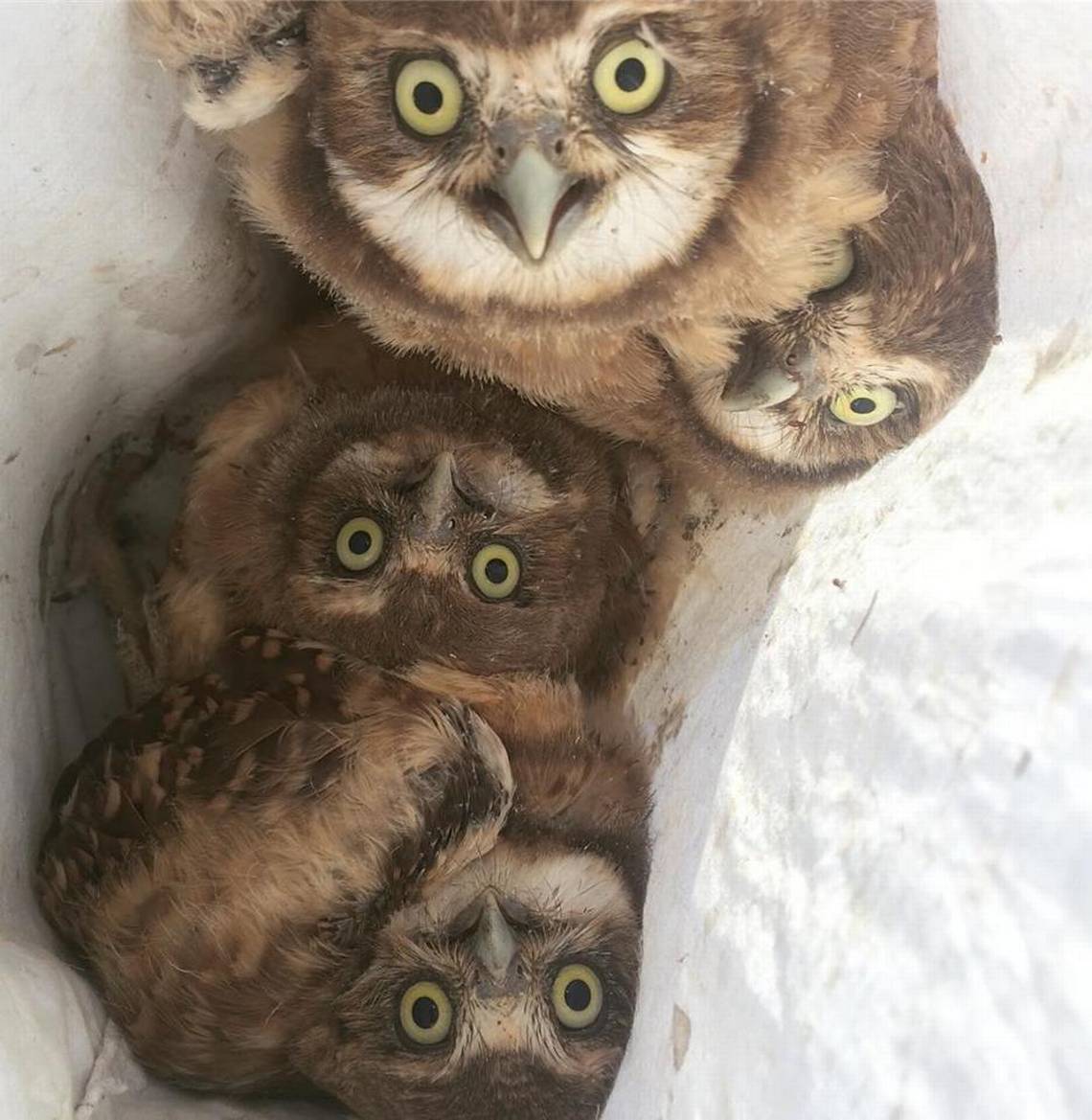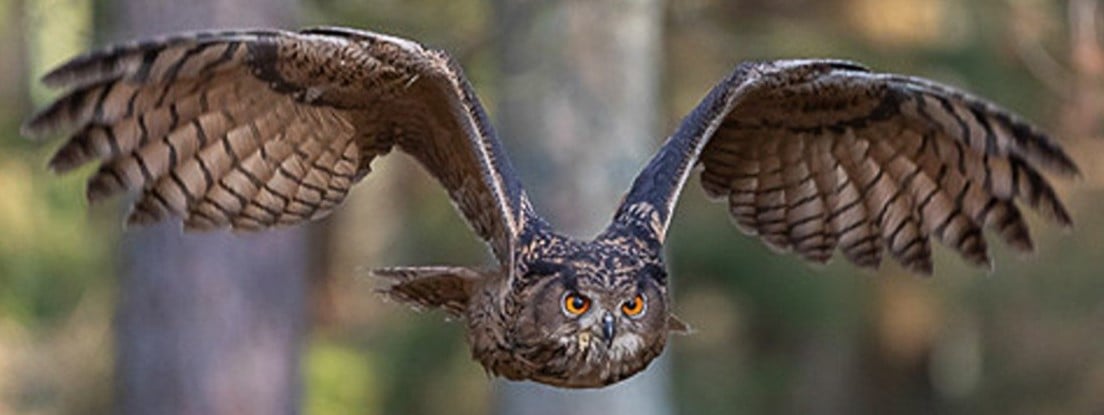From Tri_City Herald
In Washington, burrowing owls are rare. Their population has sharply declined as development takes over areas where they’ve lived for years. Small, brown and speckled with bright, charismatic yellow eyes and long legs, burrowing owls are a historic, native species in the Tri-Cities. They are protected under the Migratory Bird Treaty Act and are designated in Washington as a candidate species, meaning they could soon be listed as endangered, threatened or sensitive.
Benton and Franklin counties are the state’s few remaining strongholds for the creatures. That’s why when the city of Pasco began planning to expand its water processing facility — a critical $185 million project for its rapidly expanding food processing industry — officials needed to find a way to protect the tiny owls and their breeding sites.
A state environmental review for the facility found the city’s site contained several active burrows and two breeding pairs on the 440 acres of prime shrub steppe and grassland habitat. One breeding pair can produce up to 13 chicks in a season. Now, Pasco and state wildlife officials are saying the birds are already thriving in new homes.
**Owl ‘evictions’ **
Burrowing owls typically live underground in natural burrows that they’ve taken over from prairie dogs, ground squirrels or badgers. Unlike nocturnal owls, they are active during the day.
The city and state’s challenge was to “evict” them from their homes and move them away from the water plant’s construction site to another part of the property. Pasco worked with staff at the Washington Department of Ecology and the Department of Fish and Wildlife, and consultants at Richland-based RH2 Engineering, to reduce the impact on the area’s shrub steppe habitat and create artificial burrows.
Artificial burrows are made using a 55-gallon barrel-shaped container placed about three feet into the ground with a long, flexible attached pipe. There is a lid on top of the container that can be lifted so that the burrows can be checked over time. Below the surface, the burrows are insulated by about a foot or more of soil.
There are now seven man-made sites on the city’s lands with three artificial burrows at each location. The owls were removed from their natural burrows, tagged and released. Some moved in on their own into the artificial burrows and others moved to different natural burrows on nearby private land. The process occurred outside of the breeding season. Later, the natural burrows on the site were destroyed.
During construction, disturbance buffers also were placed at least 500 feet around occupied burrows to help prevent equipment from bothering the owls or causing burrows to collapse. The artificial burrow sites are all in a mixed agricultural area on the edges of city-owned irrigation circles near the water processing facility.
Michael Henao is an environmental compliance coordinator for the city and was involved in the biological surveying of the site to find the owls and helped identify locations for the artificial burrows. “It was easier for the city and more beneficial for the owls to be (at the new sites),” Henao told the Herald. He explained that the owls get the benefit of being in an area that is similar to their original shrub steppe habitat with access to prey like rodents and insects in the neighboring agricultural fields.
**Historic shrub steppe habitat **
Deep soil shrub steppe is prime land for burrowing owls. It’s made up of grasslands, sagebrush and other woody shrubs. In the Columbia Basin region, over 80% of the historic shrub steppe ecosystem has disappeared, according to state wildlife officials. About 90 acres of shrub steppe were destroyed as a result of construction for the water facility. The city was required to pay to replace two times the acreage of shrub steppe impacted by the project— about $190,000 — to the Franklin Conservation District. The conservation district then uses the money to buy new shrub steppe habitat areas to preserve it.
**Future for the owls **
There were several active burrows and two breeding pairs found on the Pasco site in 2022 and 2023, before construction began in late 2023. During the last survey in 2024, there were four breeding pairs of burrowing owls identified in the project’s footprint. One of the original breeding pairs on the site relocated to an artificial burrow. Three of the pairs were successful in producing 22 owlets, according to state biologist Jason Fidorra. He worked on the project starting in spring 2022.
“We’ve already seen a net increase in the population of burrowing owls and potential nesting pairs as a result of the mitigation,” Fidorra said. Fidorra explained that burrowing owls are shown to be adaptable and also tend to do “fairly well” in irrigated agricultural areas. The city, along with state wildlife officials, will continue to check on the owls and maintain the artificial burrows.
“The city really believes in industrial symbiosis — there is a full rotation with the water from the processors and we want to make sure we close the loop,” Henao said. “We want to be good stewards of the land and the animals that inhabit it.” Fidorra told the Herald that the artificial burrows can help the owl population survive and even grow, as long as they are also in areas where the owls can hunt and forage food, and stay protected from predators and harmful weather conditions.
“This only addresses one of the needs of burrowing owls,” he said. “We still have to protect the habitat so that the species can have all of its needs met in terms of survival. Long-term, how suitable the site will remain for burrowing owls will be determined in the future. The story isn’t complete yet on this project,” he said.
Fidorra said he has completed other burrowing owl conservation work, including artificial burrows, for WDFW in Franklin County on land owned by private owners, including farmers, and the Washington Department of Natural Resources.
**Water processing facility **
Pasco’s Process Water Reuse Facility treats industrial water coming from six local fruit, vegetable and dairy processors, soon to be seven with the addition of Darigold.
The facility is partially finished now. It began operating in October 2024 and should be fully operational by the second half of 2025. The treated water is used to irrigate 14 rotating crop circles on 1,900 acres owned by the city and leased to growers. The fields grow alfalfa, potatoes and corn for animal feed. In 2018, the city identified that there was a need to expand the facility and implement new technologies, like water digesters and a nitrogen removal system, because food processors had increased production. The city received a loan from the Department of Ecology’s Clean Water State Revolving Fund to expand the facility.


I thought they wanted to build a landing strip for gay Martians?
That's going on around Des Moines.